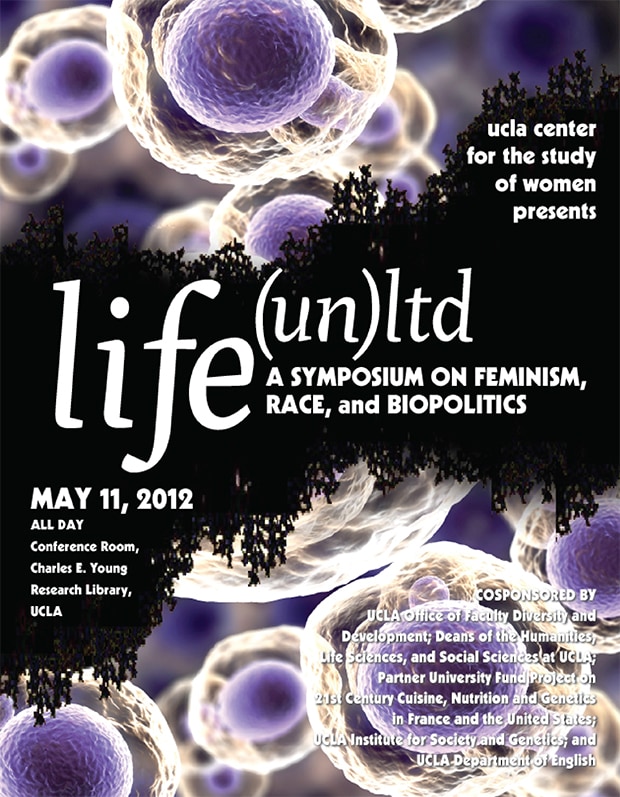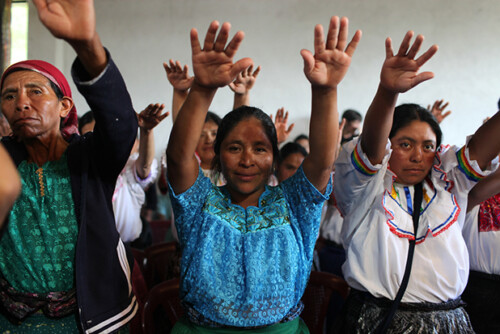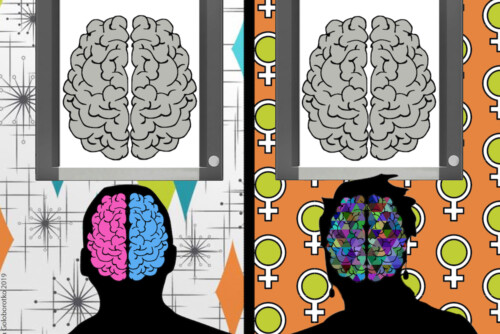The first section, Eugenic Legacies and Infrastructures of Reproduction, takes us through the historical and evolving terrain of feminist STS research on select biomedical procedures including salpingectomy, also known as tubal ligation (Renee Tajima-Peña’s documentary on County-USC’s sterilization of Mexican American women in the 1960s and 70s); techniques of visualizing and extending the rights of the fetus such as transvaginal ultrasound (Rosemary Candelario’s writing on choreographer Annie Hoffman’s send-up of the “vaginal probe” demanded in Virginia’s HB 462); and sexual reassignment surgery, as distinct from sterilization surgery—removal of ovaries, uterus—from FTM subjects (which Stephanie Hsu explores in her survey of trans activism in Taiwan and trans media celebrity in South Korea). This section concludes with a provocation by Michelle Murphy, whose 2013 book Seizing the Means of Reproduction focuses on the grassroots, “self-governing” health kits assembled by ordinary women: 1 Why do feminist, gender studies, and queer theorists’ ongoing interests in reproduction, she asks (alongside Donna Haraway), have to end at the skin? Looking specifically at the toxic effects of pollutants emitted by oil and rubber refineries on the reproduction and sex development of downstream communities, she introduces the idea of “distributed reproduction,” “temporal lag,” and “reproductive infrastructures” as key terms for grasping how porous biological life is gestated as well by industrial plants and their run-offs—the entire ecology as a reproductive system, as it were.
Continuing along these lines, the scholars whose work comprises section two, Cross-species and Cross-kingdom Enmeshments, confirm that one cannot think about the labor of reproduction and “generativity” 2 without also thinking about the nonhuman animal, as well as the bacterial, insect, fungal, and horticultural microbiologies coassembled with the animal. Here, the research wends its way through eggs, poultry, and snakes (the latter through the metaphysical icon of the Ouroboros, or the snake eating its tail) as conduits for thinking about reflexive feedback in systems of biology, commercial advertising, and academia-intellectual conferences (as explored by Susan Squier in her historicizing of the contrastive legacies of STS contemporaries, the biologist C.H. Waddington and philosopher Majorie Grene); the regulation on the level of gene expression of animal/human metabolism by the microRNAs in rice (addressed by sociologist Hannah Landecker); the entanglements of international warfare, Bombyx larvae, and Japanese and American women’s differing imbrications in the nature-culture of silk production (explored by historian Lisa Onaga); the figural and literal couplings of a “preserved Ancient Female” and a bear-woman as imagined by Ela and Alina Troyano, the latter performing as “Carmelita Tropicana” (interviewed by cinema and media studies scholar Kathleen McHugh); and the parasitic, symbiotic, and heterogeneous intimacy—of feeding, gestating, caring for, and resenting—characterizing relations between large and small scale organisms (as revealed in Amitav Ghosh’s fiction analyzed by Rachel Lee). All of these essays alight on the animal, questioning the uneven grounds of determining what counts as proper knowledge—and of whether, indeed, humans can and should adopt an openness to learning from other species’ skill-sets, entertaining the idea of nonhuman biologies as the master-teachers.
Section three, Governmentality and Activism in Biotechnical Times, bring us back around to specific biotechnologies; however, it is with no small irony that these essays emphasize the entwinement of high-tech tools developed to crack the codes of life (e.g., genetic analysis) with transformed contexts of mortal grieving—of political and grassroots efforts to adjudicate mass deaths and mini-deaths. Feminist, bottom-up approaches and Global South activism are most directly addressed by these articles, by way of crediting the power of math and counting as a biotechnology to contest enormously well-funded open-pit mining endeavors in contemporary Guatemala (the site of anthropologist Diane Nelson’s scholarly and activist engagement for several decades); by proposing contradictory effects rather than unadulterated heroism accruing to forensic DNA labs in Latin America that would return unidentified remains of indigenous victims of genocidal warfare to their natal families (as suggested by anthropologist Lindsay Smith); and, with respect to unionized Cambodian sex workers’ health activism (i.e., Women’s Network for Unity), by fleshing out their strategies to render possible risky consequences of a new HIV-management strategy (a pre-exposure oral consumption of Tenofovir sold by Gilead Sciences) as the long-term responsibilities of pharmaceutical and global health experimenters, rather than a risk to be borne solely by the sex workers who would act as these companies’ and health consortia’s de facto experimental medical subjects (as explored by sociologist Melinda Cooper). The larger historical context addressed here is late 20th to early 21st century neoliberal governance, in which negative environmental and health risks, produced by corporate actions, devolve into problems to be managed by the individual person or family rather than by the state. Two of the essays speak specifically about the consequences for feminist thinking and activism when the presumed failure of individuals’ willpower—as in the case of the so-called propensity for obesity in Los Angeles’ communities of color—becomes an alibi for government’s withdrawing collective support for caretaking the munis (explored by gender studies scholar Anna Ward). Similarly, historian Laura Briggs situates transnational and transracial adoption in a broad neoliberal shift, whereby governments shirk their funding of social welfare on an aggregate level—refusing to help the poor or the peasant population adequately raise their children—and, instead, contend that these communities are sources of “overpopulation” with one “solution” being the rescue, via adoption, one child at a time, by wealthier individuals from the global North. Adoption of the single child, taking him/her out of communities decimated by war, acts as an inadequate salve, and yet one oddly rationalizing continuing diminishment of health and social welfare infrastructures.
A final note on both the title of this special issue and the context of how these scholarly papers were collected: In May of 2012, several of the contributors to this issue gathered at UCLA under the auspices of the UCLA Center for the Study of Women for a symposium on the broad topic of Life (Un)Ltd.

The second term of the symposium’s title plays on limited liability—the “Ltd.” appended to a trade name, indicating limited liability companies (LLCs). Limited, here, refers to the status of 60 percent of Fortune 500 companies: their major stockholders enjoy the profits accrued by corporate actions but at the same time limit the personal (financial) responsibility they have for negligence due to their effective decision-making power. 3 Ltd., in other words, becomes a legally created means of enlarging, of making more limitless, the agency (qua decision making power) of capital—and persons holding investment capital—precisely by undersizing and disconnecting from the social costs borne by persons negatively effected by such corporate actions, in pursuit of profit above all else. Ltd., paradoxically, swerves into the pursuit of the limitless—that is, unlimited wealth—but on the backs of lives limited, the diminished, curtailed, and shortened futures of those bearing uncompensated and unrecognized losses.
By placing Life in front of (Un)Ltd, this special issue’s title is meant to recall, then, the centrality of the damage to the animate biologies of those from the less privileged sectors of society, who disproportionately bear the costs of limited liability companies. At the same time, and as suggested above, Life (Un)Ltd refers in our current moment to the heady experimentation in the biological and life sciences, and to the way in which the promissory horizons of the biotech/health industries rely on and produce speculative and real desires for an amplified or limitless life. These industries marshal live biologies at several scales and across several species and kingdoms for this project of amplification.
This special issue is part of an ongoing research project based at UCLA’s CSW that brings together scholars from public health, humanities, social sciences, and life sciences to develop an interdisciplinary, feminist approach to developments in the biosciences that have effects on clinical practice, human rights, as well as philosophical and artistic practices. In their variety of approaches to STS and the capacious conversations across disciplines and political advocacies, the essays in this issue offer scholarly and feminist endeavors that we hope will incubate and catalyze further work in this vein.
- Michelle Murphy, Seizing the Means of Reproduction: Entanglements of Feminism, Health, and Technoscience, (Durham: Duke UP, 2012).[↑]
- See Landecker in this issue.[↑]
- “Over 50% of U.S. publicly traded corporations and 60% of the Fortune 500 companies are incorporated in the state of Delaware.” (See the Wikipedia entry on Delaware’s General Corporation Law at http://en.wikipedia.org/wiki/Delaware_General_Corporation_Law). This curious datum is clarified by the unique requirement by Delaware that incorporated companies by a supermajority (i.e., two-thirds) of shareholder votes on a motion. This effectively allows for a minority of shareholding investors (holding 33.4% of total shares) to have effective decision-making control over the entities, and yet, still enjoy limited liability from those decisions protected by “corporate” status. According to Steve Goldberg, “a limited liability company is a non-corporate business form which provides its members with limited liability and also allows the members to participate actively in the entity’s management w/o becoming personally liable for the entity’s obligations … The Delaware Act [adopted in 1991] is considered the most modern and flexible in the nation [placing] almost no limitation on the ingenuity of attorneys and business persons in drafting company agreements to meet the needs of business transactions.” Steve Goldberg, “Why Limited Liability Companies,” available at http://www.delcorp.com/pdf/Compare_LLC_Corp_LP.pdf (PDF). Forwarding a countering view, “the London-based Economist,” in February 2013, “published an article on tax-friendly jurisdictions, commenting that Delaware stood for ‘Dollars and Euros Laundered And Washed At Reasonable Expense’” (Cited in Wikipedia entry on “Deleware General Corporation Law, available at http://en.wikipedia.org/wiki/Delaware_General_Corporation_Law).[↑]





